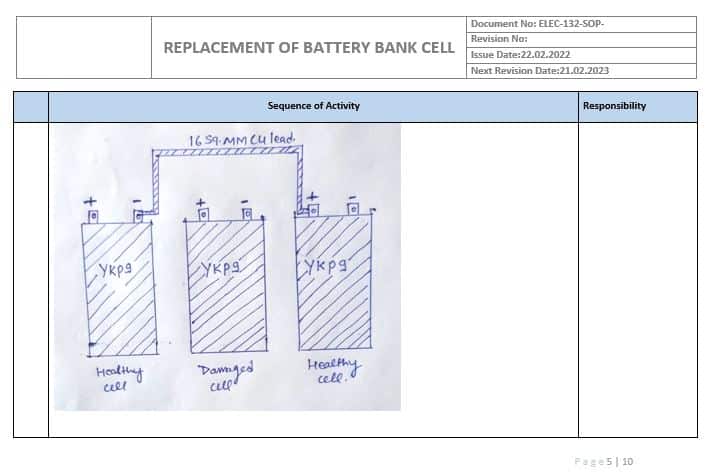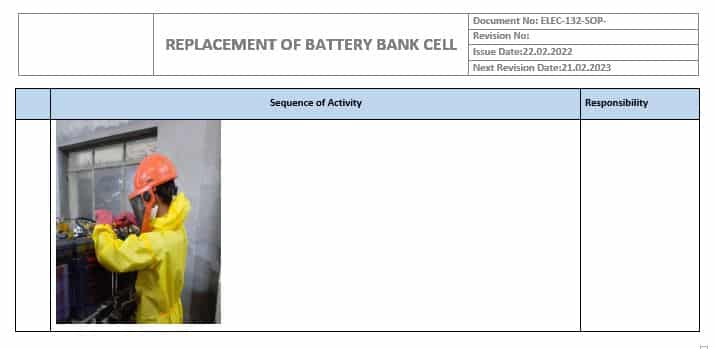A standard operating procedure (SOP) is a set of written instructions that describes the step-by-step process that must be taken in order to perform a routine activity. SOP has each and every detail of a job available in a detailed manner.
The SOPs must be followed in the exact way it is written so that the process remains consistent and no point in the SOP is left unattended. Also, the standard operating procedures provide the policies, processes, and standards that are needed for the organization to succeed. Standard operating procedures provide benefits to the business by reducing errors, and increasing efficiencies and profitability. Hence, they create a safe work environment and produce guidelines for how to resolve issues and overcome obstacles. In a nutshell, standard operating procedures are the tool that leads to a hassle-free operation.
Difference between process and standard operating procedure
Processes and procedures have step-by-step instructions which help in performing a task in the right manner. Process documentation is a high-level overview of a routine operation while an SOP is granular, which means, they add more detail, specific assignments, and workflows for confirming with company/industry standards. Hence, a process will tell what to do and an standard operating procedure will tell exactly how to do a task.
SOP will describe the procedure in a detailed way what needs to be done for an outcome and also along with it, standard operating procedures include more detailed steps and information such as who will do it when to do it, where to do and how to do it.
Use of Standard Operating Procedure(SOP)
Every organization first needs to understand its business process. A better understanding of the business process leads identification of the main areas where there is a scope for improvement.
We need an SOP because of the following reasons:
- Standard operating procedures ensure compliance standards.
- They meet production requirements.
- SOPs ensure that the procedure has no adverse impact on the environment.
- The standard operating procedure ensures safety.
- SOPs are needed to adhere to a schedule.
- They prevent manufacturing failures.
- SOPs are a good tool for compliance with the standards.
- It assists in the identification of training needs.
Even if an organization has a published method, it must follow the SOPs. The standard operating procedure provides more insights than the published content. A very prominent point in the implementation and following of standard operating procedure is the employees’ involvement. We can not get fruitful results if it is unwillingly followed. Close supervision and training is important tools for the effective implementation of SOP in an organization.
Advantages of using a standard operating procedure
The followings are the major advantages of the use of standard operating procedures.
- The SOP is a tool for carrying out activities in a systematic and effective way. when the job is done as per the written procedure, then there is the least chance of error. Definitely, if a job is done correctly in a one-shot, then it saves time and money. Moreover, SOP also helps in evaluating employee performance and creating a conducive environment for safety.
- SOPs are good means of communication across an organization. As per the SOP guidelines, every change- major or minor- needs to be done through written documentation in SOP, and whatever changes need to be updated in SOP and a copy of the changed document needs to be redistributed to the user. Thus, standard operating procedure reduces the probability of miscommunication and it leaves no room for doubts.
Components of Standard Operating Procedure(SOP)
The SOP contains the following components/sections.
- Title of SOP
- Introduction of SOP
- Applicability of SOP
- The Role/Responsibility Matrix
- The physical checks or checklists must be filled.
- The requirements for the job
- The step-by-step procedure for performing the job
- Reference
Title of Standard Operating Procedure(SOP)
This section has the title of the SOP and some basic information about the SOP. This section can also have necessary approvals, revision numbers, and revision dates.
Introduction of SOP
This section of the SOP has the introduction which will include the basic details of the job. It will also include what is the importance of the job to be conducted.
Objective of SOP
The objective of the SOP will contain the basic objective of the job to be performed.
Applicability of SOP
This section of the SOP has the areas in which the SOP can be applied. For example, the SOP is for starting a pump. This SOP may vary according to the type of pump, the service in which the pump is placed, etc. This section will define SOP and specify the area where an SOP will be applied.
Role/Responsibility Matrix
This section has the roles of all activities to be done for the mentioned job. The job which needs to be performed will contain many sub-activities that require the involvement of different people who are at different levels or positions. This section will give a clear idea of all persons involved in the job and their responsibilities during the job.
Physical checks or checklists
This section has a detailed physical check which is important to be checked before starting the job. Say, for example, the starting of the pump has many checks. Some of them are:
- Whether the pump is ready to start?
- Whether cooling the water circuit is ok or not?
- Whether lube oil level is ok or not?
- Whether the pump inlet and outlet valves are open or not, etc.
Filling out such a checklist before starting a job helps a lot. All the major obstacles or problems can get noticed in this step. Thus, it becomes easy to perform the job after the problem is identified and rectified.
Requirements for the job
This section has the list of all the items/tools/equipment which is required for performing a job. A lot of times it happens that while performing a job, some item/tool/equipment is missing. For such a case, some extra time is needed which leads to delay. Thus, the SOP becomes useful in avoiding such types of delays.
Step-by-step procedure for performing the job
This section has detailed procedures for performing a job. This section is useful to everyone, for a person performing the job for the first time as well as for an experienced person. By performing a step-by-step procedure the mistakes that occur while doing a job due to human error or any other kind of error can be avoided.
Reference
This section has the references that are taken for creating the SOP. It is useful when details of any part of the job mentioned in the SOP are needed in the future.
How to write a standard operating procedure
An effective standard operating procedure clearly explains the steps taken to complete a task and informs the employee of any risks associated with the process. The manual should be brief and easy to understand, with a focus on how things should be done rather than what needs to be done. Once written, the SOP should be analyzed and updated every six to 12 months to guarantee it remains relevant to the standards and requirements of the organization; any changes made should be recorded.
Before writing the SOP, the author(s) should perform a risk assessment of all the steps in the procedure to determine any obstacles that may arise during the process and any risks associated with those obstacles.
Key questions that should be answered in the standard operating procedure include:
- Who performs what role?
- What does each role do?
- What is the goal or outcome of each person’s role?
- Has what needs to happen been explained clearly?
To decide which procedures would benefit from an SOP, organizations should make a list of all their business processes. Managers should discuss employees’ day-to-day responsibilities and tasks to ensure all procedures are accounted for. Any tasks that are repeated by multiple employees should be considered for SOP creation.
Step 1: Define the task’s goal and why it needs an SOP
The first step to writing a standard operating procedure is to define the task’s goal and understand why that goal needs an SOP.
Step 2: Determine the format for SOP
Next, the author must decide what type of format they would like to use for the SOP. Sometimes, an organization will have a premade template provided; other times, authors will have to design their own. Some examples of formats include:
- Flowchart or workflow diagram: Used to display procedures with unpredictable or various outcomes.
- Simple steps: Often written as a bulleted or numbered list, including documents such as safety guidelines. This brief, simple list is best used with procedures that are short and easy to follow.
- Hierarchical steps: Also written as a bulleted or numbered list but intended for procedures with many steps and decisions. This list includes a numbered list of primary steps followed by a collection of more specific ones.
Once a format has been chosen, the author must then decide if the SOP will be available as a written hard copy or if it will be available online.
Step 3: Identify task dependencies
The third step is to determine any dependencies. It is possible that the task being recorded relies on other procedures within the organization. The author should identify these dependencies and decide how to incorporate them into the new SOP, or if it would be better to add the new standard operating procedure into an existing one.
Next, the author should identify their audience to determine how the SOP should be written. For example, an SOP written for employees with previous knowledge will be very different from one written by new employees.
Once all these decisions have been made, the author can begin to write the SOP. While writing, a present verb tense and active voice should be used. The author should not use the word “you,” but it should be implied. If a style guide is provided by the organization, then the author should adhere to it.
Example of SOP for Replacement of Battery Bank
The format of the SOP is given below.








